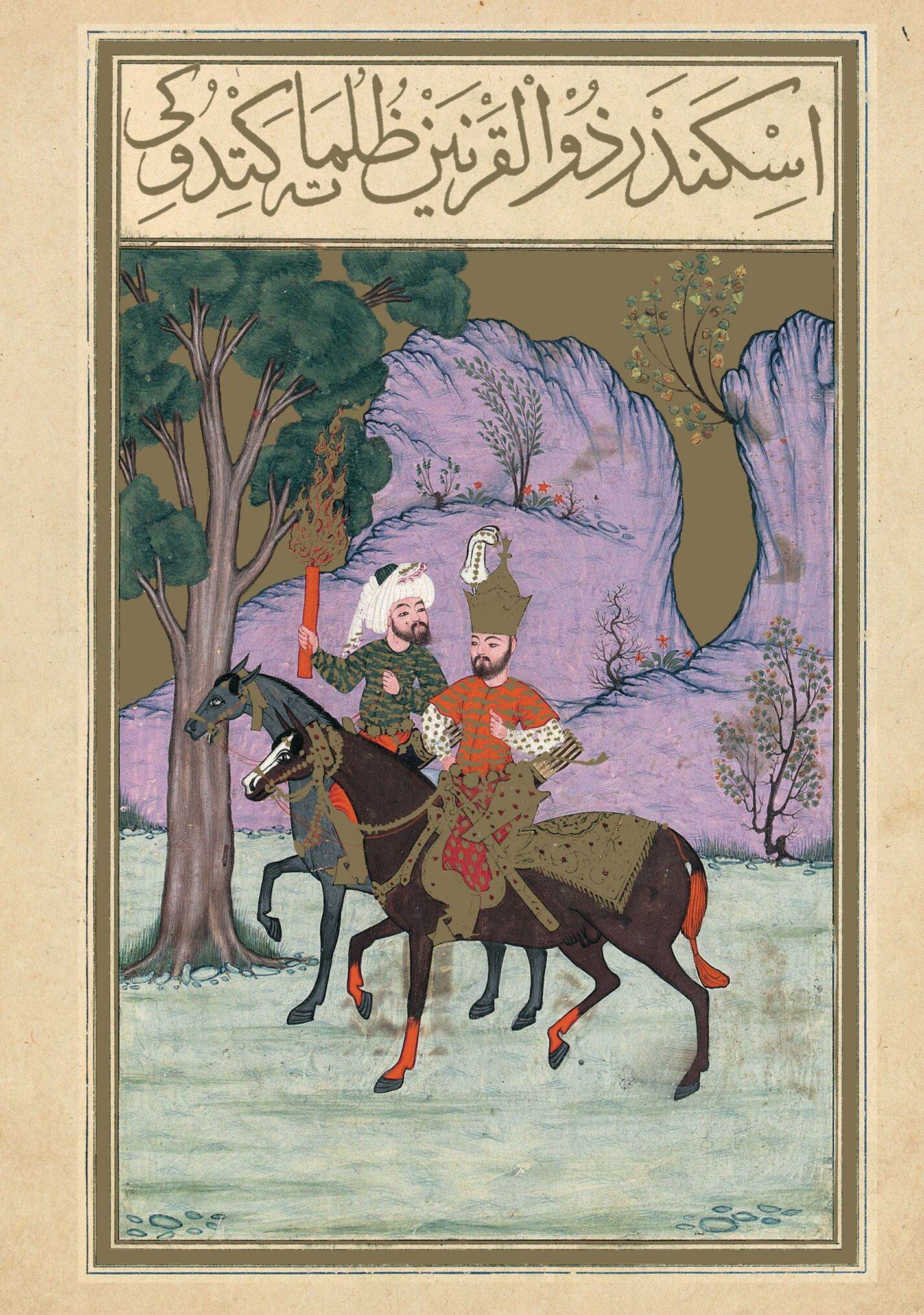The Qur’an tells the story of how Alexander the Great – a mythical figure who was known in the Arab world as Iskandar or
Dhu al-qarnayn (“the man with two horns”) and became one of the most written about heroes in Arabic, Persian and Turkish literature – was accompanied by Khidr, "the green one", in search of the Fountain of Life in the Land of Darkness (sura 18, verses 59-81).
The illustration is set in a brilliant landscape with tall, pale purple rock formations, a golden sky, a large tree and several leafy flowering bushes stemming from the rocks. Khidr’s torch is lit, its flames springing in the air, but it is not clear whether the two figures are just about to enter the Land of Darkness or it is the fire of the torch and of their faith that has set the landscape around them ablaze. Alexander is dressed in full regalia with a tall crown, richly embroidered clothes and jeweled sword, bow-case and caparisons for his horse whose legs and tail are curiously painted with henna. His companion and his horse are partially hidden behind Alexander, but his direct and encouraging glance at Alexander makes his close relationship with the hero obvious.
In the
Kitab al-bulhan the corresponding illustration is very different, depicting a crowned horseman followed by a servant holding a closed parasol, a symbol of power (f. 39v). The title above was partially erased, perhaps by a reader who realized that the painter had not interpreted the story correctly. In the Turkish copy, the artist clearly understood the subject and may have improved upon the work of his predecessor considerably.
Stefano Carboni
The Metropolitan Museum of Art
Curatorial Assistant in Islamic Art
(Fragment of the
Book of Felicity commentary volume)
